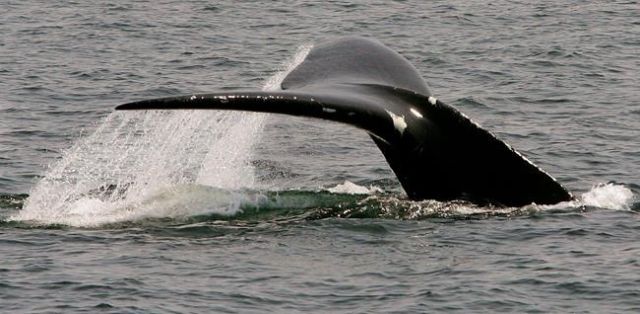
Necropsy indicates fishing gear likely caused death of right whale
Necropsy results indicate a North Atlantic right whale found in waters off the eastern U.S. in September died after being entangled in Canadian fishing gear.
The 40-year-old male known as Snake Eyes was last seen entangled in the Gulf of St. Lawrence on Aug. 6 off the Magdalen Islands. Its badly decomposed carcass was discovered off Long Island, N.Y., on Sept. 16.
The Atlantic Marine Conservation Society did the necropsy a few days after the whale was found.
“They (scientists) determined that the likeliest cause of death was entanglement,” said Jennifer Goebel, a spokeswoman for the fisheries arm of the National Oceanic and Atmospheric Administration.
Goebel said the necropsy found no evidence of blunt force from hitting a vessel. While the internal organs were “significantly decomposed,” no signs of disease indicated death from natural causes.
No gear was found on its body but Goebel said scientists found wrap marks on the whale that matched what had been observed when the animal was last seen entangled.
“They were able to find linear wounds that were wrapping the rostrum and pectoral flippers as well as wounds to the fluke, which is the tail,” Goebel said. “Those were consistent with what was documented while the animal was alive, as were the head wounds.”
Death from entanglements, she said, can be “rather gruesome” for marine animals.
“Animals can get severe cuts from the entanglements, it can limit their ability to forage, they can get infections from the cuts — it’s a very painful way to die.”
So far this year, eight right whale are known to have died in Canadian waters out of an endangered population numbering about 400 animals. Twenty-nine right whales have died in North American waters since 2017.
It’s believed the death of Snake Eyes is the first this year as a result of entanglement. Three other whales were also sighted entangled in the Gulf this year.
Goebel said it’s not certain the fishing gear spotted on the whale last summer was Canadian but the evidence points that way.
“What we do know is that it was seen in the Gulf of St. Lawrence in July without any gear and then the next sighting was in August with a severe entanglement in the Gulf of St. Lawrence,” she said.


